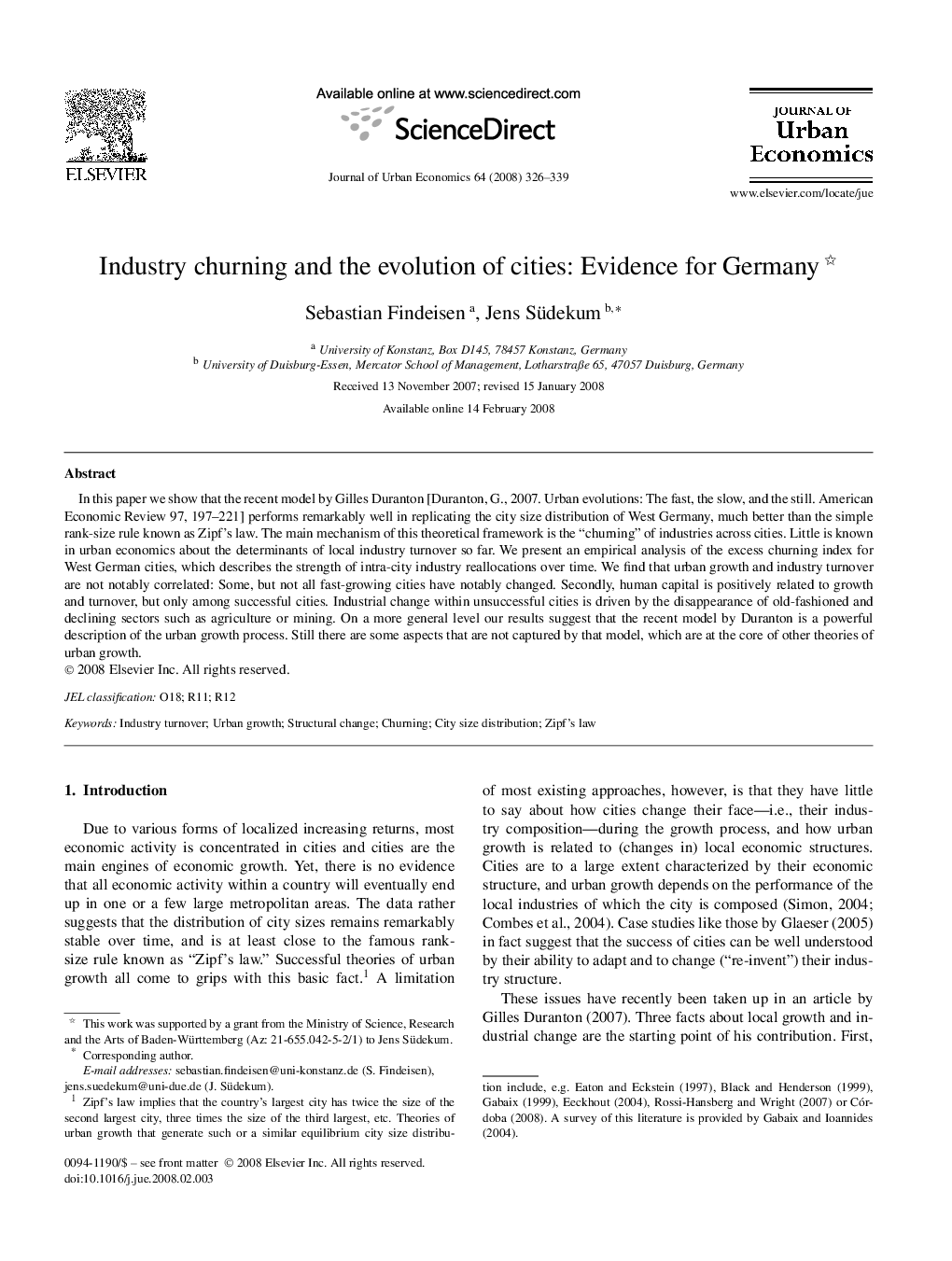| کد مقاله | کد نشریه | سال انتشار | مقاله انگلیسی | نسخه تمام متن |
|---|---|---|---|---|
| 971588 | 932364 | 2008 | 14 صفحه PDF | دانلود رایگان |

In this paper we show that the recent model by Gilles Duranton [Duranton, G., 2007. Urban evolutions: The fast, the slow, and the still. American Economic Review 97, 197–221] performs remarkably well in replicating the city size distribution of West Germany, much better than the simple rank-size rule known as Zipf's law. The main mechanism of this theoretical framework is the “churning” of industries across cities. Little is known in urban economics about the determinants of local industry turnover so far. We present an empirical analysis of the excess churning index for West German cities, which describes the strength of intra-city industry reallocations over time. We find that urban growth and industry turnover are not notably correlated: Some, but not all fast-growing cities have notably changed. Secondly, human capital is positively related to growth and turnover, but only among successful cities. Industrial change within unsuccessful cities is driven by the disappearance of old-fashioned and declining sectors such as agriculture or mining. On a more general level our results suggest that the recent model by Duranton is a powerful description of the urban growth process. Still there are some aspects that are not captured by that model, which are at the core of other theories of urban growth.
Journal: Journal of Urban Economics - Volume 64, Issue 2, September 2008, Pages 326–339